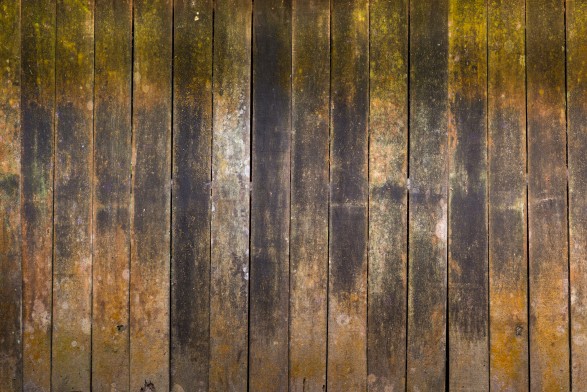Timber Decay: What to look for

Most damage is caused by ageing of the timber, or by damp conditions, saturating the fibres creating a bed for fungal spores of dry and wet rot, or wood-boring insect eggs.
Dry Rot
Dry rot fungus can rampage through a building, destroying any timber in its path. The fungus thrives in moist unventilated conditions and can cause widespread destruction of structural timbers, skirting boards, door frames and wood flooring. It can often occur in the areas of a property that are less visible such as floor voids or behind panelling, which means it can do a lot of damage before it’s even noticed. It looks like an off-white cotton-wool like sheet on brickwork and timber and, in later stages, can develop thick fungal strands. Whilst most damage is confined to the timber, fruiting bodies which look like mushrooms can grow through plaster and paint work. These fruiting bodies produce red spores, which are often the first visible sign of a problem. Timber which is entirely decayed in this way can crumble away between your fingers. Treating dry rot can involve the removal of the affected timber, including that within a metre of the infected area. Extensive chemical fungicide treatments are available for all adjacent timber and brickwork around contaminated walls and plaster. However, this is not always necessary. A more modern approach is to use environmental controls, such as isolation and ventilation which ensure that the conditions dry rot needs to thrive do not occur. Using ventilated skirting boards will help keep floor voids ventilated and including damp-proof membranes around the outside of door frames helps to isolate them from potentially damp brick work.
Wet Rot
Wet rot is a much more manageable problem to tackle. It occurs when there are high levels of moisture in timber, causing it to naturally decay. The cause of this is almost always a structural defect; water collecting on the timber, or adjacent walls suffering from damp.
You need to look for signs of rot in vulnerable areas of timber, such as window and door frames. If paint finish is damaged, this can increase the chance of wet rot Any structural problem needs to be tackled at the same time as the timber is treated, otherwise the problem is likely to recur. Timber suffering from wet rot will feel spongy and look darker than the surrounding timber. Ensure that all external frames are adequately painted to protect the timber from water. Be aware of any damp walls and address the problem; possibly a damaged damp proof course, or bridged cavity. Other favoured places for wet rot are under the kitchen sink, bath, shower, washing basins, etc; all areas where a leak from a water supply could go unnoticed for a long time and timber could become saturated with water. First, treat any structural problem. Then, remove and replace rotten timbers. If the damaged area is fairly small, it can be cut away and a new piece of timber joined. After repair, external timber should be protected with coats of paint or other treatment or preservative.

